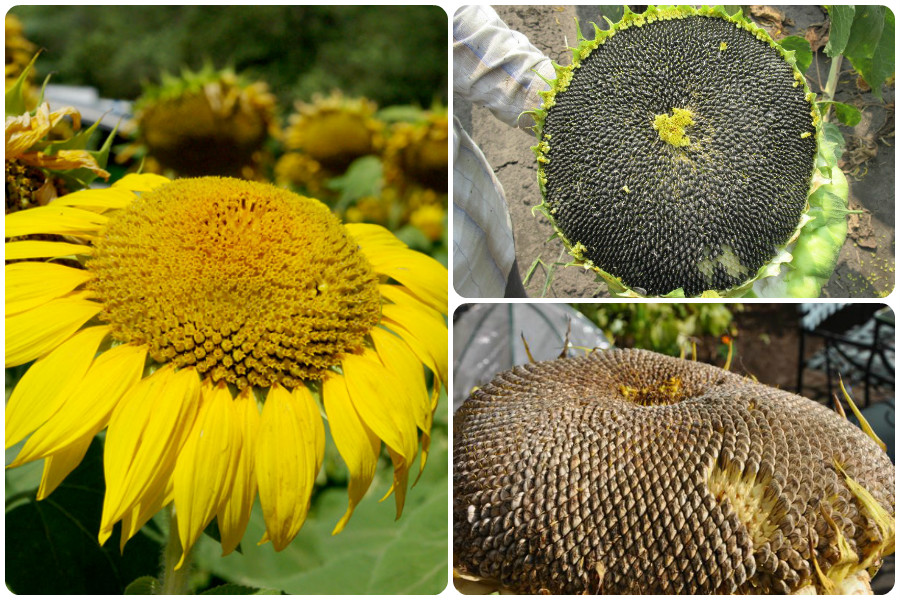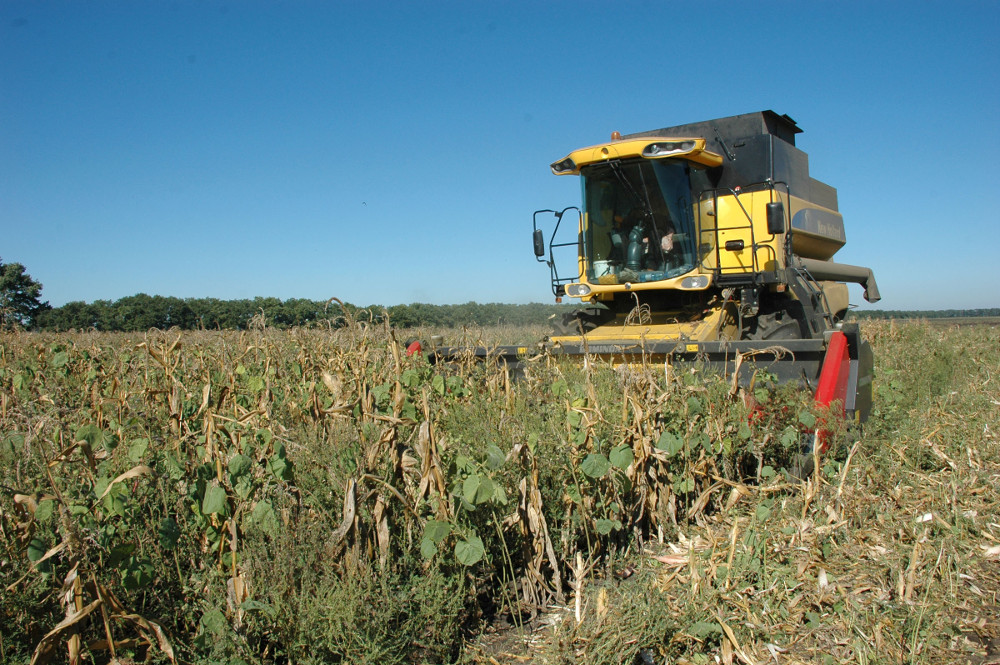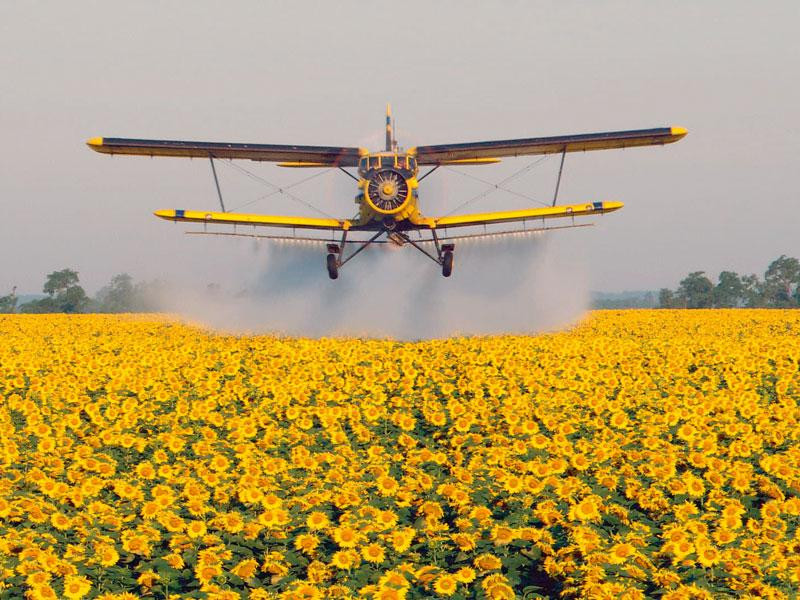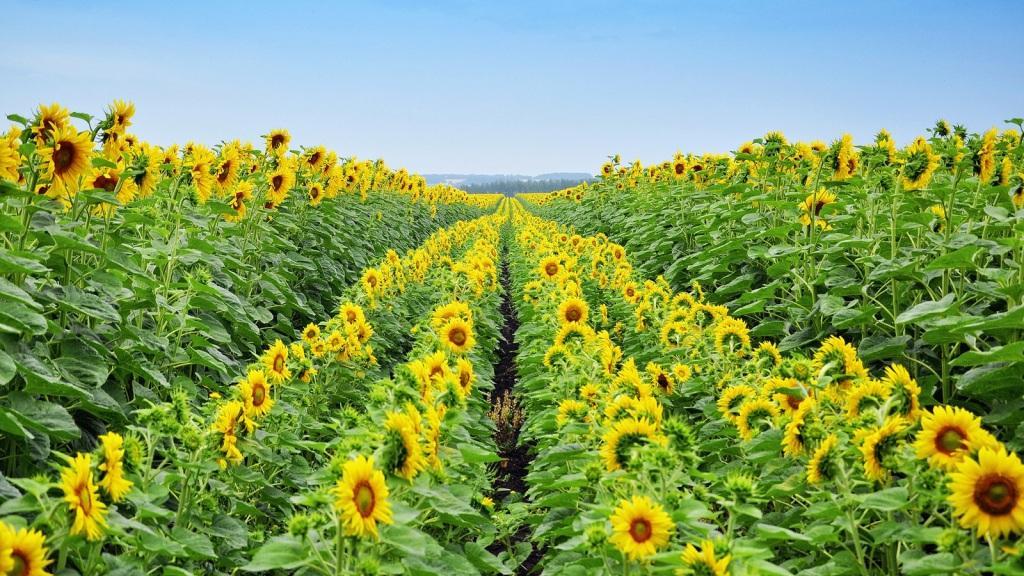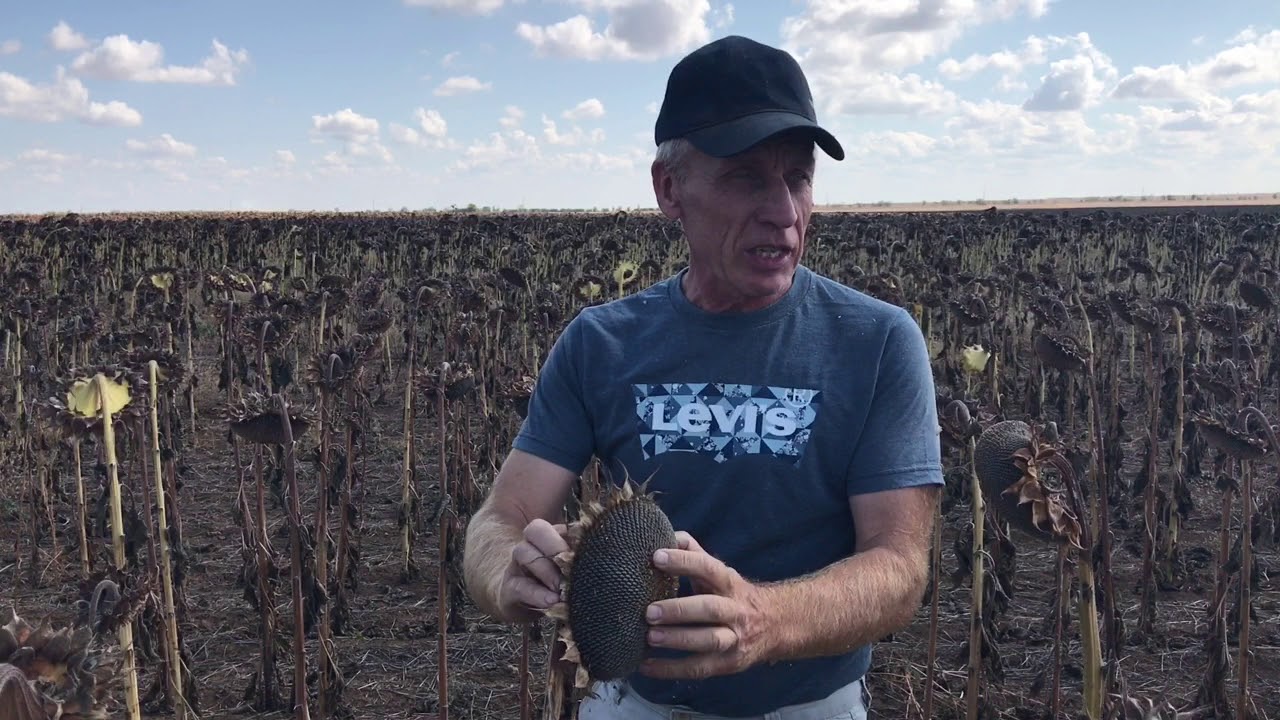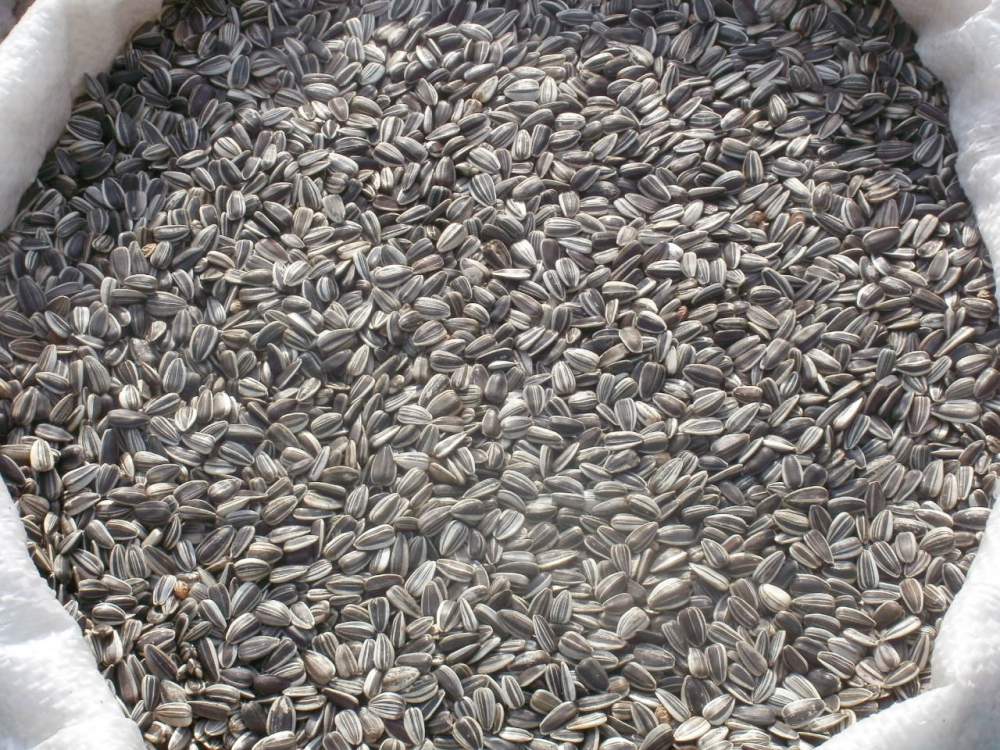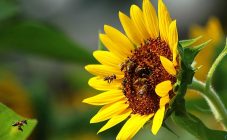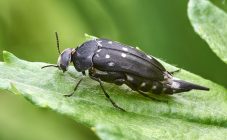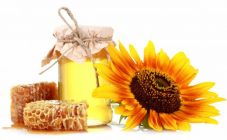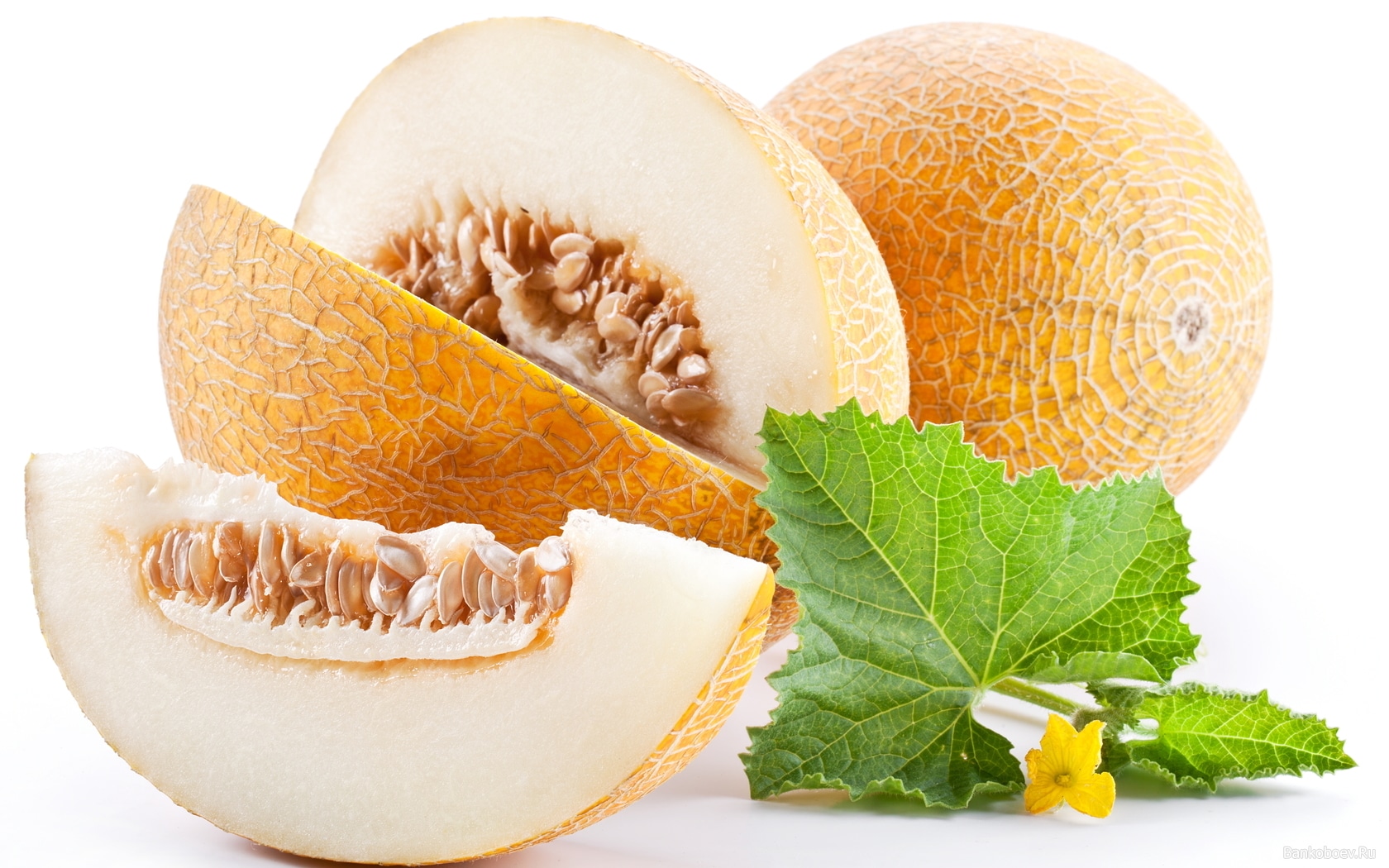Content:
Sunflower harvesting is one of the important stages of agricultural technology, which determines the yield, the properties of oil and seeds. It is important to provide good growing conditions for the crop on the site when changing crop rotation.
Optimal cleaning times
The time when sunflowers ripen is determined by the ripening of the fruits, the variety and the weather conditions. Many varieties of sunflower are cultivated on agricultural lands in Russia. Among them are early maturing varieties SUR and Rodnik with an 80-day growing season and high oil content. The varieties are zoned twice in the southern regions: in May and at the height of the summer season.
In ultra-early ripening varieties (Buzuluk, Yenisei, Cruise), the growing season lasts almost 3 months. The ripening period of the superearly ones (Cossack, Berezansky, Donskoy-60 and VNIIMK-88883) takes 80-86 days. The varieties grow well in bad weather conditions in the Volga region and in the south of the Urals.
Signs of seed ripening
The main parameters of maturation seeds:
- Humidity. Pouring of sunflower seeds occurs on the fortieth day after flowering at the onset of the phase of physiological ripeness.
When the sunflowers ripen, the accumulation of useful elements stops, and the humidity decreases to 20%. The stage of economic maturity is coming. - Ripening baskets. When sunflowers are cut, color indicates ripening. According to long-term studies, 70-80% of the baskets are brown and dry with a high yield and the rest are yellow. In addition, the moisture content of the fruit is 18-20%.
Sunflower maturity levels
Gardeners are interested in how to determine the ripeness of sunflowers. Experts record three degrees of ripening of plants:
- Yellow, if the green baskets on the back become yellow-lemon, the seeds develop as much as possible and have a moisture content of 40%;
- I am brown, if the basket and the foliage around it dry up and turn brown, the moisture content of the seeds is 10-14%;
- Complete, if the culture completely dries out, the moisture content of the seeds is 7-10%.
However, when the sunflowers are harvested, the harvesting is not very delayed. The stagnant sunflower threatens to reduce the yield to 7-8%. In addition, dry seeds are quickly poured, crushed when threshed, damage is caused by:
- winged;
- small rodents;
- proteins;
- parasites.
For the agricultural sector of the northern zones, the main problems are high air humidity and rainfall. The optimum moisture content for harvesting seeds is 12-14% in dry autumn conditions. As a rule, oilseeds are harvested at a seed moisture content of 18%, sometimes at 20-22%.
Harvesting times for regions, depending on climatic conditions, differ:
- for the Volga region and the Moscow region it is 8-10 days, they fall: in the third decade of August (20-27.08) - early varieties, from September 9 to 16 - mid-season varieties, from September 23 - late varieties;
- in Moldova and the North Caucasus - within 5-7 days, starting from mid-August.
To meet these deadlines, preparatory events are organized:
- repair cleaning equipment;
- preparing transport for transportation;
- rooms for cleaning and drying seeds.
The timing of sunflower harvesting affects the oil content of the crop. It is advisable to harvest sunflowers in the steppe zone if the plantings are distinguished by a small number of yellowish-brown baskets, and the remainder are brown.
Table of dependence of oil yield on sunflower harvest time
| Harvesting period | date | Description of baskets,% | The amount of oil in seeds, t |
| 1 | 15.09 | Yellowish brown - 36, Brown - 25, Green-yellow - 39 | 42 |
| 2 | 20.09 | Green-yellow - 7, Yellowish brown - 41, Brown - 52 | 48 |
| 3 | 25.09 | Yellowish brown - 2, Brown - 98 | 53 |
| 4 | 30.09 | Brown - 100 | 54 |
| 5 | 05.10 | Brown - 100 | 50 |
| 6 | 10.10 | Brown - 100 | 47 |
Sunflower desiccation
But often in an unfavorable climate, the seeds do not have time to ripen, the humidity is 25%. Pre-harvest drying, or sunflower desiccation, is aimed at speeding up the ripening process. Treated with sunflower desiccants in dry weather:
- aedile;
- raglon;
- magnesium chlorate;
- glyphosate.
Glyphosate based chemicals are intended for seed crops and are designed for long term use. The preparations are mainly used 14 to 28 days before harvest. Crops dry out gradually, because diseases affect the sunflower basket for a longer period, reduce the quality of oil seeds.
Glyphosate products act systemically on crops. For seed sowing, this active substance is not suitable - the penetration of the seed into the embryo reduces energy and germination.
When desiccating sunflower, the timing seed ripening is reduced, and also notes:
- simultaneous ripening of crops;
- earlier start of sunflower harvesting - by a week;
- increased productivity;
- quality of seeds with a maximum moisture content of 9%;
- reduction of harm from phyto-diseases;
- increase in oil yield from 1 ha;
- increased productivity of combines, reduced energy consumption.
Conditions for desiccation:
- Carrying out an operation when changing the color of the baskets to brown, one and a half weeks before harvest.
- At a moisture content of 25-30% crops.
- Application of recommended pesticides.
- Compliance with technology.
- Correct calculation of herbicide dosage.
- Spraying oil plants, if it is dry and sunny outside, in the morning.
- Threshing sunflower 10 days after desiccation.
The optimum moisture content of the harvested seeds does not exceed 7% and affects the storage time.
If you collect seeds with high humidity, it threatens with oxidation and unsuitability for the use of sunflower oil in nutrition.
Cleaning
12-14% humidity signals the start of harvesting in hot climates. In areas with an unfavorable climate, the process is delayed up to a month, the humidity reaches 18%. The total loss of sunflower does not exceed 3%, however, it is possible if harvesting is not timely. Delaying deadlines doubles the loss of self-sleep.
The yield of oilseeds is determined by:
- hybrid or variety;
- climatic zone;
- the weather;
- type of soil.
1 ha yields a minimum of 18 and a maximum of 40 centners of seeds. However, the average indicator in the agricultural sector, for example, in the Krasnodar Territory, is 26.4 c / ha. The parameter of sunflower productivity differs by region:
- 35 c / ha - Bryansk region;
- 12.8 centners / ha - Samara region;
- 10.9 c / ha - Altai Territory;
- 21.1 centners / ha - Rostov region;
- 10.4 centners / ha - Orenburg region;
- 13.3 centners / ha - Volgograd region.
Negative dynamics is seen due to the cultivation of oilseeds in areas with an unfavorable climate without the use of zoned varieties.
Harvesting takes place in the first ten days of August and ends at the end of November, before snow falls. The time depends on the variety. Some farmers start harvesting sunflower seeds before the onset of winter due to the optimal moisture content of the seeds and good keeping quality. It is important to monitor the appearance of mold, which gives an unattractive aroma and acidity.
Features of agricultural technology for harvesting oilseeds:
- loss of seeds does not exceed 2.5%;
- stubble height - 20 cm;
- in the course of threshing baskets and cleaning seeds on the separating working bodies, the number of injured individuals is limited to 1.5%;
- crumbling and collapse of grain during threshing into seeds - maximum 1%;
- clean heap in the bunker - 95%.
The sunflower has a high stem, which often grows up to 230 cm and gives rise to the need to process the plant mass up to 120 kg / ha with different moisture levels.
When sunflowers are picked, it is difficult to establish with certainty until the day. They are harvested at a moisture content of 14% in a semi-baked state and stored in a warehouse with a grain gun. Wait 1 or 2 months, when the seeds themselves peel off.
The methods of harvesting sunflowers in the fields include both mechanical and manual ones. In the first case, a grain harvester equipped with a special header is used.
Hand structures for cleaning
The principle of operation of the device, how to get seeds from a sunflower, is to hit the cap and knock out the seeds. Variations of handheaders are popular among summer residents:
- Skewer. Suitable for farmers who cultivate sunflower on a massive scale - for oil to get benefits. The spit is used on 10-20 acres of the garden. The mechanism will need a 200-liter metal barrel and a welding machine. Inside the container, sills are welded to contact the sunflower when the apparatus is scrolled. Holes are made on the sides of the barrel for pouring seeds. The hats are put into the barrel and the device is scrolled. The device works effectively when dry crops and 6% relative humidity are harvested. Grain saturated with moisture is hardly knocked out. Some farmers make a fire under the barrel or place ten. Thus, it is possible to get roasted or dried seeds.
- Stool leg. An effective tool for a garden bed where a couple of dozen crops grow. Such a "reaper" does not require spending, it can be easily prepared by everyone or found in the barn. The stool leg has the required mass and shape to hit the sunflower head. There are 2 methods to harvest. A bag is pulled over the sunflower's cap and blows are applied. 10-15 manipulations are enough for the seeds to be in the bag. Another method involves pruning the sunflower hats in one place, then knocking out the seeds while sitting. The method is suitable for those who wish to conveniently and simply collect seeds.
- Polyethylene. Some summer residents prefer the old-fashioned ways - a stick and oilcloth. Similar to the previous trick, but deals with 15-20 cultures. Spread plastic wrap on both sides of the row. The summer resident passes by and knocks out the heads.The device is moved further along the length of the row and the procedure is repeated. The seeds are picked up and poured into the dishes.
- Bag. The crop heads are trimmed and placed in a large polyethylene bag. When filling the bag, knock out at least 5 minutes with a stick (shovel holder). Then they untie the bag and take out the empty hats. To get rid of debris, raw materials are blown under a fan.
Storage
The shelf life of raw materials during storage is determined by the integrity of the coating. Damaged seeds lose their mechanical protection against the penetration of microorganisms. Its presence in the mash is noticeably weakened by a weed impurity, which has a higher hygroscopicity than seeds.
Summer residents are interested in how you can save sunflowers after cutting. The bookmark for long-term storage of sunflower depends on weediness, which is a maximum of 2%. Raw materials are dried and cooled to a temperature of no more than +10 ° C. Shelf life is 6 months.
Seeds are stored:
- the creation of an embankment up to 1 m, with a seed moisture content of 7-8%;
- in bags, forming 6 tiers, with 10% maximum humidity;
- in ventilated barns after preliminary cleaning and good drying.
Storage of 99% peeled seeds with a moisture content of 7% is carried out in a dry place. Storage conditions: relative air humidity - 60%, minimum temperature - 25 ° С. You can not store seeds for a long time in an unsuitable room due to hygroscopicity and oil oxidation.
Late harvesting of sunflower
Late harvesting results in:
- Oil seeds fall from a basket with a genetically loose structure, especially in windy conditions when interacting with each other.
- The stems of plants lie down, break, and are damaged by mice, birds, wild boars.
- The baskets suffer from phyto-diseases, which lead to their partial or complete mortality. Pathologies respond to the properties of seeds, a reduction in oil content, the weight of 1000 grains, and an increase in acidity.
Losses from shedding on day 5 increase 1.5-2 times, on day 15 - increase 12 times. A decrease in the moisture content of sunflower biomass, including baskets, leads to a weakening of the bond of seeds with the basket.
Farmers know how much the damage from stagnant oilseeds is. With a moisture content of seeds of 5-6% in bad weather, the damage reaches 80 kg per day. If the moisture content of the seeds decreases, the losses both from self-damping and behind the combines increase.
The sunflowers that summer residents ripen on their personal plot bring not only aesthetic satisfaction, but allow you to feast on and enjoy the fragrant seeds. To do this, you will need to learn about the rules for harvesting and storing sunflower crops.
